Ditch your living room sweat sesh and take your training outside.
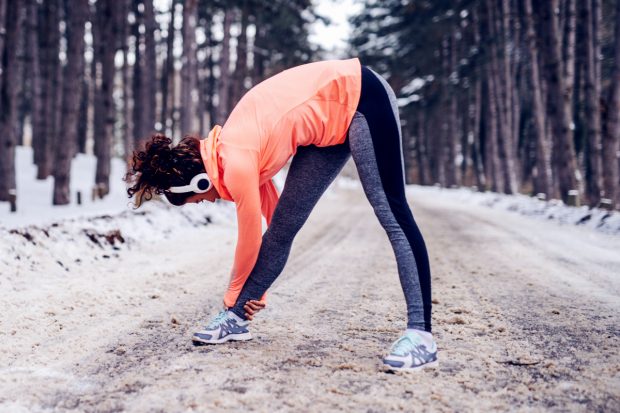
Feeling more tired than usual? The change in season may be to blame! Shorter, darker days mean less exposure to sunlight. But it’s the perfect time for outdoor workouts this winter. Whether you run a 5K or hike some trails, the great outdoors can transform your mood.
These expert tips will convince you to take your winter workouts outside—and keep you from freezing.
The Benefits of Outdoor Winter Workouts
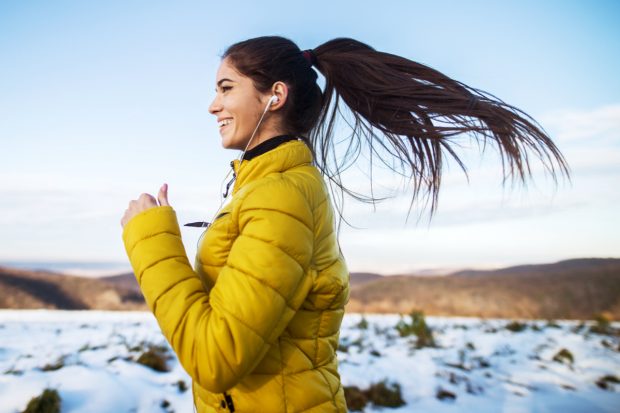
Your body responds to the cold by releasing a compound called irisin, which does 2 things—increases your body’s ability to burn fat and triggers your brain’s reward system.
Just 20 minutes of winter workouts will elevate your irisin levels and increase your motivation. And the benefits keep going long after your workout is done.
Outdoor workouts in the cold produce a 5 percent uptake in your total calorie burn for the day. Not to mention, cold weather is ideal for building stamina.
Winter is the perfect season to try longer distances. You might feel cold at first but you’ll soon acclimate to the chilly temperature and be able to go longer distances and push yourself harder.
Last but not least, colder weather is the perfect time to switch up your typical training routine.
Instead of running, you might try trekking, cross-country skiing, ice skating or even snowshoeing, depending on where you live. Different textures and the weight of the snow add more challenge to your regular workout routine and provide a solid opportunity to switch things up.
Related: 5 Incredible Reasons to Take Your Workouts Outside
How to Acclimate to Colder Temperatures
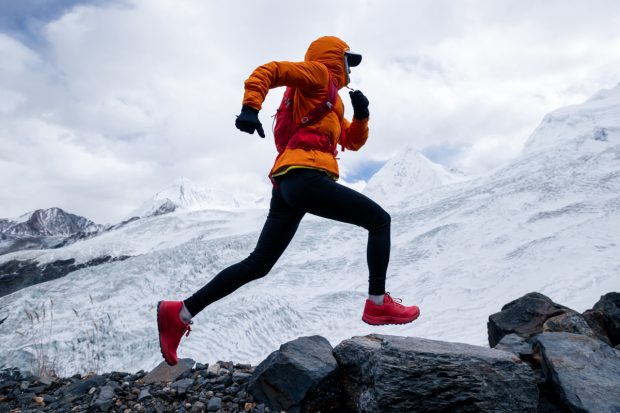
When cold air hits your body, your blood vessels constrict in an effort to reduce the amount of heat that you lose.
With repeated exposure to colder temperatures, your body gets acclimated to the chill and your blood vessels get blunted, meaning your blood flow increases and your skin temperature doesn’t drop as drastically. The more often you train in the cold, the more you acclimate.
But by no means should you just head out the door without first prepping your body. Start with some dynamic stretches and a proper warm-up while you’re still inside. This will elevate your body temperature and get you ready for your winter workout once you step outside.
How to Dress for Your Winter Workouts
Apparel
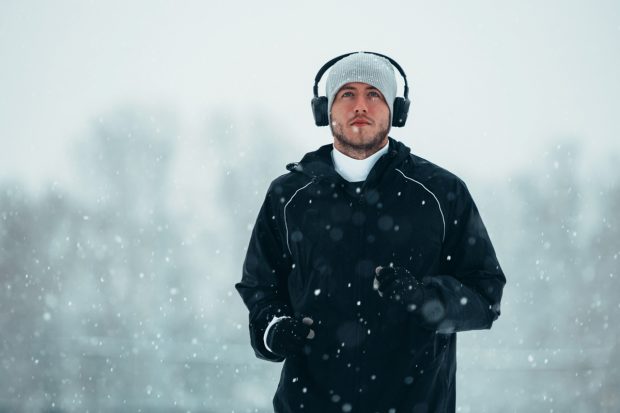
You don’t want to be too comfortable when you step outside because as you get moving, your body temperature will rise. For example, if you’re exercising in 40- to 50-degree temperatures, dress in a light jacket and gloves.
For every 10-degree drop in temperature, add an element of warmth—beenie, warmer jacket or pants. If you train in temperatures below 30 degrees, add a water-resistant jacket to the mix. And if you exercise in temperatures below 20 degrees, you should cover your extremities—ears, hands or any other area exposed to the cold.
Choose clothing that is breathable and sweat-wicking to keep warmth from escaping. Knits, for example, trap warmth better than woven garments.
Eye Protection
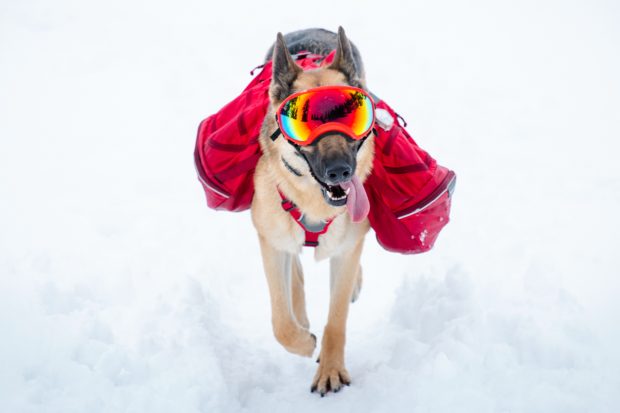
Snow reflects light, which may cause damage to the eyes. Choose a pair of sunglasses that reduce glare and wrap around your face to block UV rays. Gray lenses block the most light and reduce squinting.
Face Protection
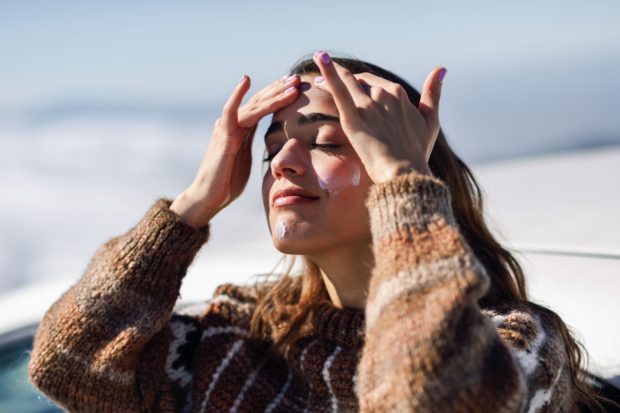
Snow reflects up to 80 percent of the sun’s UV light, so in winter months, you’re getting double the amount of rays—one from the sun and the second from the reflection. To protect your skin, always wear sunscreen, regardless of whether it’s sunny or not. Choose a sunscreen with an SPF of 30 or higher and be sure to cover all exposed skin, including the ears.
Now What?
Research suggests that working out in cool or cold conditions is good for you. This doesn’t mean you should hit the trails in just shorts and a t-shirt. If you’re properly geared up, there’s no reason to keep training indoors this winter.
Take Gymondo outside. Try our new First 5K running program and hit the pavement. Or explore 350+ workouts that you can take with you wherever you may go.



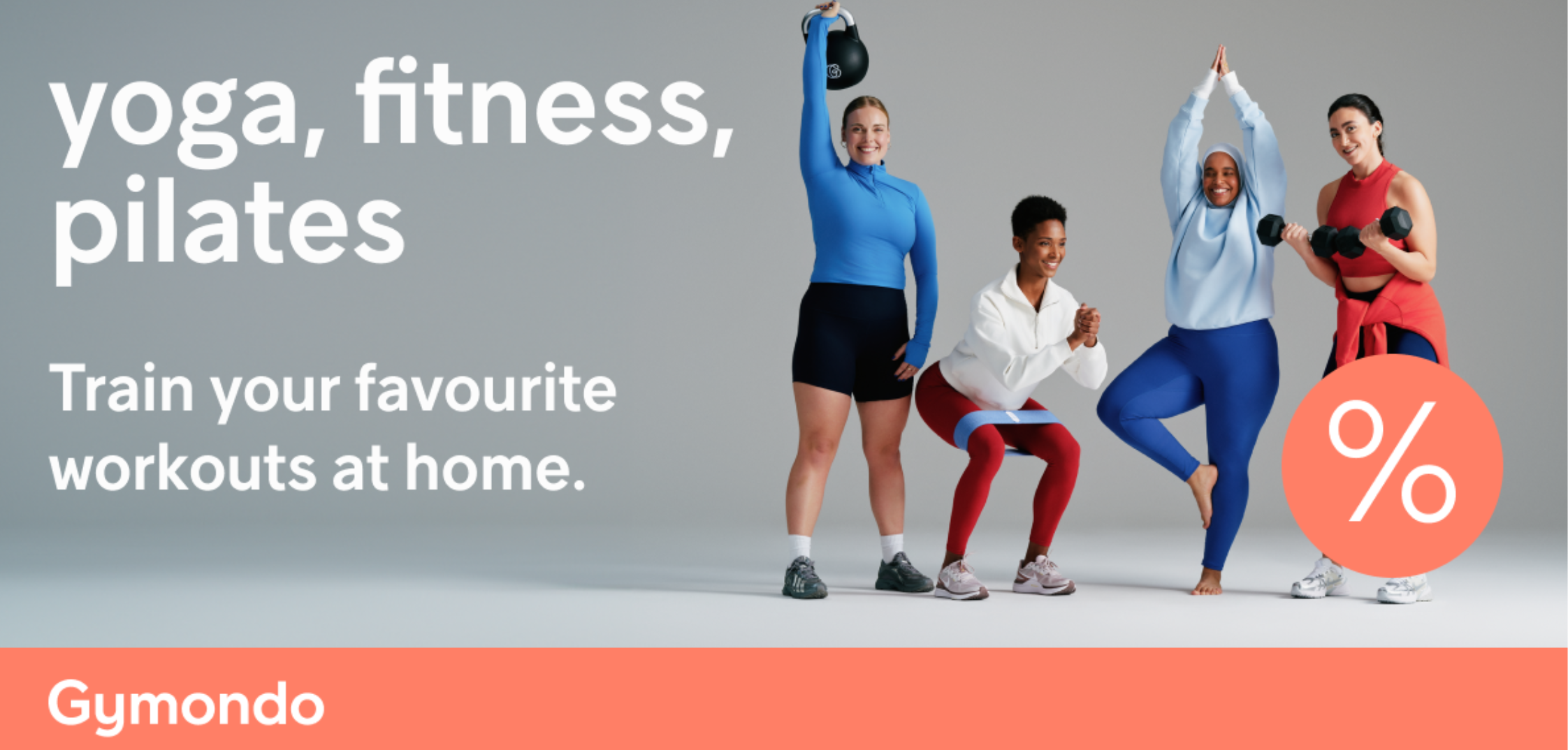
Kommentar schreiben